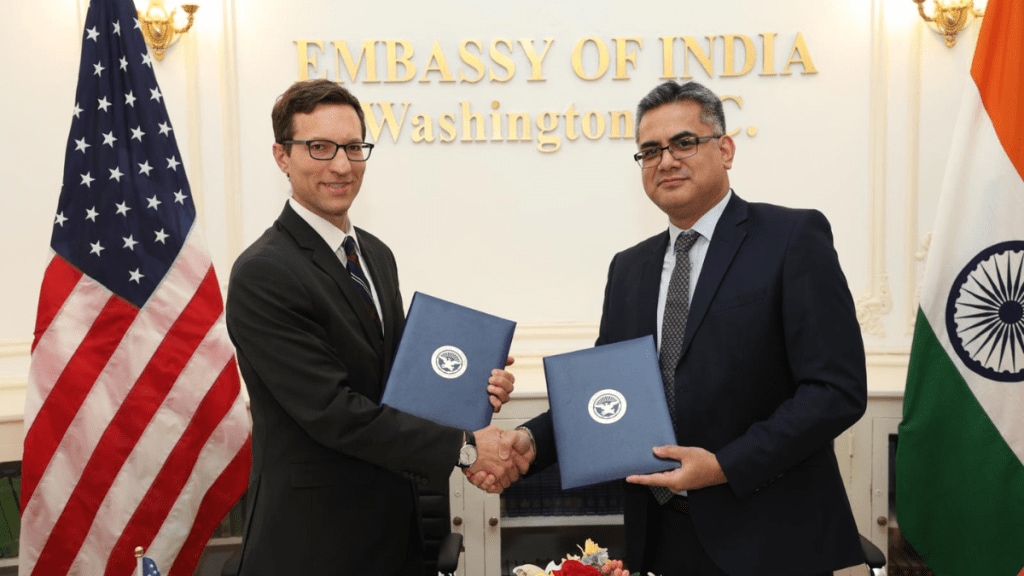The recent signing of the Security of Supply Arrangement (SOSA) between the United States and India marks a significant milestone in their growing defence partnership. As Prime Minister Narendra Modi prepares for his upcoming visit to the United States, this bilateral, non-binding agreement between the US Department of Defence (DoD) and the Indian Ministry of Defence (IN MoD) underscores a deepening commitment to enhancing defence cooperation. The SOSA is designed to provide reciprocal priority support for goods and services critical to national defence, ensuring both countries can navigate and resolve unanticipated supply chain disruptions.
At its core, the SOSA is an acknowledgment of the intertwined nature of modern defence supply chains. With global supply chains becoming increasingly complex and vulnerable to disruptions—whether from geopolitical tensions, pandemics, or other unforeseen events—this agreement is a proactive measure to ensure that both nations can maintain their defence readiness. “This Security of Supply Arrangement represents a pivotal moment in the US-India Major Defence Partner relationship and will be a key factor in strengthening the US-India Defence Technology and Trade Initiative (DTTI),” stated Dr Vic Ramdass, Principal Deputy Assistant Secretary of Defence for Industrial Base Policy. His words reflect the strategic importance of this arrangement in bolstering the defence industrial bases of both nations.
Through the SOSA, the US and India commit to supporting each other’s priority delivery requests for critical national defence resources. For the United States, this support is provided through the Defence Priorities and Allocations System (DPAS), a legally binding system that ensures the timely availability of industrial resources. India, on the other hand, will establish a government-industry Code of Conduct, where Indian firms will voluntarily commit to providing priority support to the US defence needs. This mutual commitment is expected to strengthen the resilience of both countries’ defence supply chains.
The significance of this arrangement cannot be overstated. In times of crisis—be it peacetime, emergencies, or armed conflict—having a reliable and responsive supply chain is crucial for maintaining national security. The SOSA not only establishes communication mechanisms and working groups but also streamlines processes within the DoD to pre-emptively address potential supply chain issues. This proactive approach is essential for ensuring that both nations can sustain their defence operations without disruption.
India’s inclusion as the eighteenth SOSA partner of the United States places it alongside key allies such as Australia, Japan, and the United Kingdom. This partnership signals India’s growing role in the global defence landscape and its alignment with US strategic objectives. For India, the SOSA represents an opportunity to enhance its defence industrial base, attract investment, and foster greater technological collaboration with the United States.
Furthermore, the arrangement aligns with India’s broader strategic goals of achieving self-reliance in defence manufacturing under the Atmanirbhar Bharat initiative. By securing priority access to critical US defence resources, India can mitigate the risks associated with supply chain disruptions, thereby strengthening its defence capabilities.
As global uncertainties continue to challenge supply chains, the SOSA between the US and India serves as a critical tool in ensuring that both nations can maintain their defence readiness. The agreement not only reinforces the strong defence ties between the two countries but also paves the way for deeper industrial cooperation, co-development, and co-production initiatives. As Dr Ramdass highlighted, the upcoming DTTI meeting will be an opportunity to further enhance this cooperation, solidifying the US-India partnership as a cornerstone of global defence stability.
US-India Security of Supply Arrangement: A strategic move to counter supply chain disruptions
The SOSA is designed to provide reciprocal priority support for goods and services critical to national defence
Written by Express Defence

TOPICSDefence
Get Live Share Market updates, Stock Market Quotes, and the latest India News and business news on Financial Express. Download the Financial Express App for the latest finance news. .
This article was first uploaded on August twenty-three, twenty twenty-four, at forty-two minutes past three in the afternoon.

